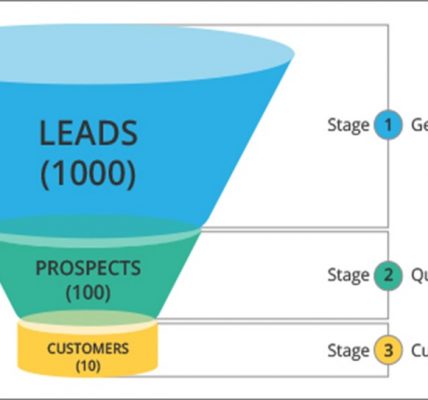One of the most exciting things that an individual might encounter is opening up an online store. It requires a set of steps to be followed to set up a small business online. This article comprises the steps needed to set up an online store, followed by tips to increase an online store’s efficacy for newbies.
Steps for Setting up an Online Store
Step 1: Pick a niche for your company and choose the items you want to sell. It simply translates to what you’ll be selling and to whom you’ll be selling it.
Step 2: Decide whether you want to dropship or keep inventory. Dropship needs no upfront investments and is one of the simplest ways to start. However, it entails inferior branding and low-profit margins. On the other hand, keeping your inventory demands more upfront capital, requires stronger branding, and helps generate better profit margins.
Step 3: Come up with a business name and create a website. There are several platforms to choose from when it comes to setting up an e-commerce shop. Most users’ most common blunder is failing to select the appropriate forum for their online store. Shopify or WordPress + WooCommerce are the two major e-commerce podiums that do wonders.
Tips to Help you Sell More
Since its beginning, online selling has made great strides, and there is now more competition than there has ever been. If you’re starting a small business for the first time, the following tips will boost your online store selling process.
- Begin by exploring competition
Evaluating and conducting competitive research is a critical component of any effective e-commerce strategy. To sell effectively online, you must first decide your plan and then stick to it. Your distribution channels, media communications, and strategic analysis are all part of this. Consider your unique selling proposition to be an excellent online seller. Thousands of other companies are already doing what you’re doing in whatever sector you’re in. Thus steering out competition will serve as a vital step to success.
The steps for conducting and planning your competitive research are as follows:
- Carry out research and obtain competitive intelligence
- Investigate Competitor Information
- Establish Your Competitive Advantage
Determine main competitive advantages and disadvantages and analyze them. Examine the products or services competitive climate. Comment on goods or services that are similar and those that aren’t. Create a list of the significant challenges and opportunities that your business is facing, and that might require action. Market penetration forms, distribution coverage, product line requirements, pricing revisions, and cost reductions are all items to consider.
Craft and execute an actionable marketing plan that will improve your market position by combining your competitor research with your market’s demographic analysis.
- Consider responsive design
Consumers do not consider using their smartphones to be any different from using their desktop or laptop to access the internet. And as a marketer, neither should you. Tech leaders have rapidly realized that the website’s mobile version has plenty of advantages for both the company and the customer. You will create more leads by developing content and campaigns that cater to both your desktop and mobile audiences if you build a responsive mobile version of your site.
- Constant optimizing is the key to achievement
Consumers have more choices and options than ever before when it comes to online shopping. Besides, their attention spans are shrinking. Continued innovation to enhance your customer experience is essential for your online store. Look for areas that are weaker and strengthen them regularly. It will facilitate shopping and, as a result, boosts your profits. It can include optimizing your website for search engines, reducing bounce rates, creating seamless navigation and checkout paths, etc.
- Dispense free samples
Influential writers, journalists, and vloggers from various industries and niches can be found on the internet. Locate the appropriate individuals and send a free sample of your product. Hopefully, they will mention you on their channels, thus creating strong word-of-mouth. Influencer marketing is a crucial tool to drive increased traffic and sales. Use this technique smartly.
- Start Blogging
You’re missing out on the infinite potential of content marketing if you don’t already have a blog associated with your store or product. Blogs help people build faith in your brand and keep them updated by delivering accessible, helpful content. Blogging also provides you with content to post on social media and improves your search engine rankings via high-quality backlinks.
- Develop a buyer’s persona
A customer profile is a fictional character that represents the ideal customer. A typical customer persona includes information such as; age, gender, socioeconomic status, occupation, etc. It will help you narrow down the subjects for your content and the tone in which you communicate it. More importantly, creating multiple personas along with using detailed analytics will help you target the right audience in your marketing campaigns for better ROI.
- Attain and display certifications on your website
The correct seals on your website will also help you convert more customers. When a trusted third-party essentially vouches for your company, customers are more comfortable purchasing from a new store. An SSL certificate is a fantastic resource. It demonstrates that your website has some basic security measures in place. This gives visitors and customers the surety that their personal information is in safe and trustworthy hands.
- Make an Investment and build an impressive website
A website with slapdash graphics and poorly written product descriptions would not attract customers. Invest in a reputable web developer to assist you in creating a website that is compatible with your preferred e-commerce platform. Find quality product photos, write engaging content, and publish it on your website in an appealing and user-friendly manner.
- Deliver outstanding customer service
Consumers have choices when it comes to online stores, so give customers a reason to visit yours. Giving your brand a personal touch by enhancing customer service would make it special and unique. It will help them recall your brand and thus keep them coming back to you to buy more.
How can you boost your selling skills?
Provide outstanding customer service by handling each customer interaction as if it were the first and last. Be courteous, truthful, and provide all requested information. Customers expect their goods to arrive immediately, usually the next day. If you’re dropshipping imported goods, make sure your customers know this and that there is some other advantage for them in it. However, don’t be too obnoxious in your approaches. If you’re new to online selling, your family and friends could be a good place for you to learn how to interact and market your goods. They can also help you polish the demo version of your yet unpublished website.
Customers would appreciate it if you provide them with extra services. Don’t whine; be flexible instead. The online world is rapidly diversifying, and you must prepare yourself to adapt. Establish a personal link with your customer and request reviews at all times. Take the time to enjoy the interaction and be grateful that you are not trapped in a position you despise.
Final thoughts
When you sell online, you don’t have the luxury of having customers walk into your (digital) shop by accident. Invest in a reputable web developer to assist you with the creation of your website. Businesses must adapt to keep up with the changing demand. Best-selling goods that were common before the pandemic might no longer be in high demand. Creating your ideal online store could be a very satisfying experience if done correctly. You will be competitive if you prepare carefully and make thoughtful decisions.











![Watch Video Now on xiaohongshu.com [以色列Elevatione perfectio X美容仪 perfectio X 全新仪器黑科技了解下]](https://www.techburgeon.com/wp-content/uploads/2019/07/perfectiox-singapore-150x150.jpg)
